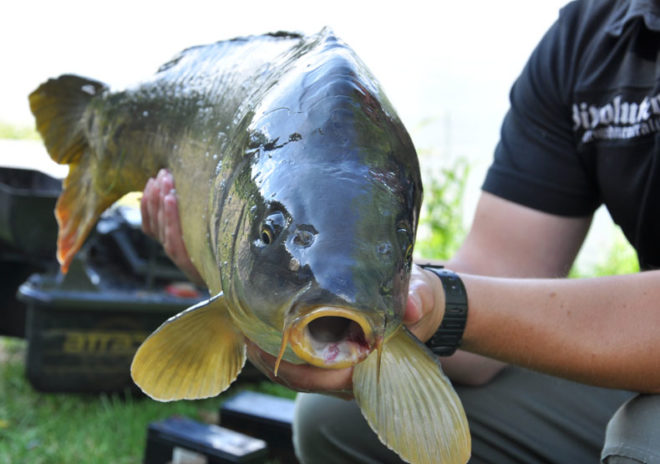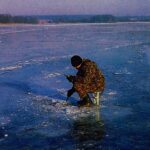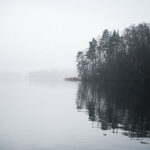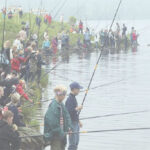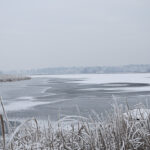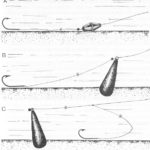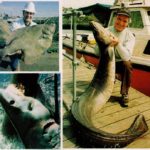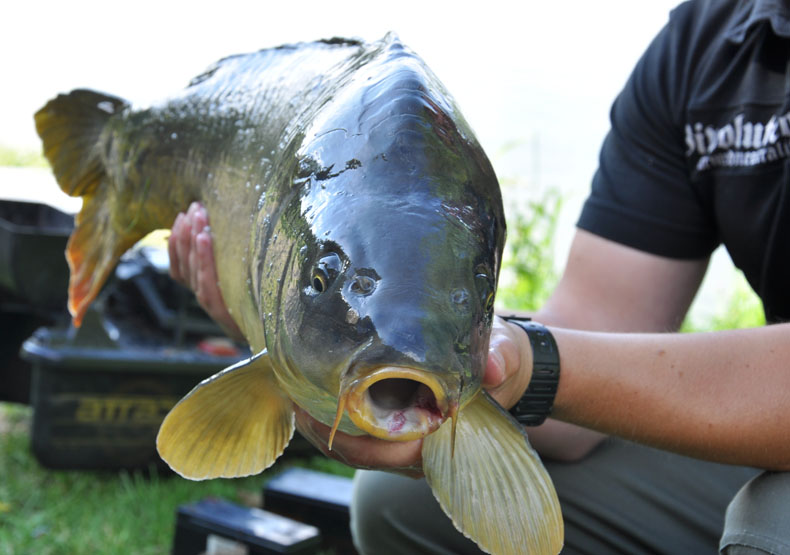 Wędkarstwo jest w Polsce niezwykle popularnym zajęciem. Uprawia je kilka milionów osób, z czego ponad milion to zrzeszeni w Polskim Związku Wędkarskim – spadkobiercy 710-letnich tradycji zorganizowanego wędkarstwa w naszym kraju. Szeregi PZW co roku zasila około 50— 70 tys. nowych członków. Wyraźnie bowiem daje się odczuć na naszym rynku brak literatury wędkarskiej o charakterze popularnym, dostępnej i zrozumiałej nie tylko dla zaawansowanych wędkarzy, lecz także dla stawiających pierwsze kroki, którzy pragnąc poznać arkana i tajemnice wędkowania, do tej pory zdani byli niemal wyłącznie na żmudne dochodzenie poprzez błędy do własnych metod. Nasza strona http://wedkowanie24.eu skutecznie tę lukę zapełnia, a przy tym odpowiada potrzebom polskiego Czytelnika, gdyż podczas jej tworzenia wprowadzono zmiany bądź uzupełnienia dostosowując poradnik do naszych warunków oraz obowiązujących przepisów i regulaminów.
Wędkarstwo jest w Polsce niezwykle popularnym zajęciem. Uprawia je kilka milionów osób, z czego ponad milion to zrzeszeni w Polskim Związku Wędkarskim – spadkobiercy 710-letnich tradycji zorganizowanego wędkarstwa w naszym kraju. Szeregi PZW co roku zasila około 50— 70 tys. nowych członków. Wyraźnie bowiem daje się odczuć na naszym rynku brak literatury wędkarskiej o charakterze popularnym, dostępnej i zrozumiałej nie tylko dla zaawansowanych wędkarzy, lecz także dla stawiających pierwsze kroki, którzy pragnąc poznać arkana i tajemnice wędkowania, do tej pory zdani byli niemal wyłącznie na żmudne dochodzenie poprzez błędy do własnych metod. Nasza strona http://wedkowanie24.eu skutecznie tę lukę zapełnia, a przy tym odpowiada potrzebom polskiego Czytelnika, gdyż podczas jej tworzenia wprowadzono zmiany bądź uzupełnienia dostosowując poradnik do naszych warunków oraz obowiązujących przepisów i regulaminów.
Na stronie znajdziecie wiele rad i wskazówek, wartościowych zarówno dla początkujących, pragnących dopiero nauczyć się sztuki wędkarskiej, jak również cennych i z pewnością interesujących dla bardziej doświadczonych wędkarzy. Bezpośredni, niemal gawędziarski sposób, w jaki autor pragnie przekazać własne doświadczenia i wiadomości mniej zaawansowanym kolegom sprawia, że stronę tę czyta się lekko, z zainteresowaniem, a zawarte w niej informacje są łatwo przyswajalne nawet dla zupełnego laika.
Warunki uprawiania wędkarstwa w Polsce Czechach, Słowacji, mimo że zbliżone, nie są jednak identyczne. Dotyczy to zarówno warunków geograficznych i hydrologicznych obu krajów, występowania poszczególnych gatunków ryb, jak również przepisów obowiązujących w zakresie ochrony przyrody i wód oraz połowu ryb wędką.
Porównując stosunki hydrologiczne obu krajów trzeba stwierdzić, że wody polskie, chociaż jest ich znacznie mniej (przeciętna roczna zasobów wód w Polsce na 1 mieszkańca wynosi 7 900 m3, podczas gdy w Czechach i Słowacji – 2 500 m3), są bardziej urozmaicone niż wody naszych południowych sąsiadów. Szacuje się, że ogólna powierzchnia wód w Polsce wynosi około 591 tys. ha, z czego 66% to wody stojące. W Czechach i Słowacji, poza jeziorami zaporowymi, prawie całkowicie brak jezior. Większość polskich rzek należy do zlewiska Morza Bałtyckiego, a tylko 0,3% do zlewiska Morza Czarnego (potok Czadeczka, Czarna Orawa). W Słowacji rzecz ma się odwrotnie; tylko nieliczne rzeki należą do zlewiska Morza Północnego. Pociąga to za sobą występowanie tam szeregu gatunków ryb słabo nam znanych.
Ogromna większość naszych rzek należy do dorzecza Wisły i Odry, a zaledwie 9,8% powierzchni kraju to dorzecza uchodzących bezpośrednio do Bałtyku rzek Pomorza i Mazur oraz dorzecza Niemna i Pregoły. Największa z naszych rzek, Wisła (długość 1092 km), ma dorzecze o powierzchni 193,9 tys. km2. Tworzą je takie dopływy jak: Soła, Skawa, Raba i Wisłoka zaliczane do rzek górskich i odznaczające się dużymi spadkami, lecz małym przepływem. Większe ilości wody doprowadzają Dunajec i San. Obydwie te rzeki w górnym biegu noszą również znamiona rzek górskich. Największym dopływem Wisły jest Bug z Narwią. Wraz z Biebrzą i Wieprzem są to typowe rzeki nizinne o małych spadkach. Drwęca, Wierzyca i Radunia to rzeki o dość dużych spadkach i małych przepływach wody.
Dorzecze Odry ma powierzchnię 118,4 tys. km2, z czego na terenie Polski znajduje się 106 tys. km2. Całkowita długość Odry wynosi 848 km, zaś jej głównym dopływem jest Warta z Notecią. Obfitujące w wodę dopływy sudeckie to rzeki Bóbr i Kwisa. Z pozostałych dopływów większe znaczenie mają: Mała Panew, Barycz i Olza.
Dorzecze przybrzeżnych rzek bałtyckich ciągnie się pasem szerokości 60-80 km między ujściem Odry a ujściem Wisły. Główne z nich to: Rega, Parsęta, Wieprza, Słupia, Łupawa i Łeba.
Pojezierze Mazurskie obejmuje między innymi takie rzeki jak: Pasłęka (dopływ Zalewu Wiślanego), Łyna i Węgorapa uchodzące do Pregoły oraz Czarną Hańczę i Szeszupę wchodzące w skład dorzecza Niemna.
Na niektórych rzekach w naszym kraju znajdują się sztucznie wykonane zbiorniki zaporowe. Większych z nich jest 140, o łącznej pojemności wynoszącej ok. 2,8 mld m3, co stanowi zaledwie 5% objętości wody odpływającej średnio rocznie z obszaru kraju (analogicznie w Czechach i Słowacji liczba ta wynosi ok. 12%). Największe nasze zbiorniki zaporowe znajdują się na Sanie w Solinie, na Wiśle we Włocławku i na Dunajcu w Rożnowie. Pełnią one wielorakie funkcje, z reguły są również wykorzystywane do celów wędkarskich. Ze względu na usytuowanie oraz charakter można je podzielić na typy: górski (np. Wapienica i zbiornik w Wiśle-Czarnem), przejściowy (Jezioro Rożnowskie) i nizinny (zbiorniki w Goczałkowicach, Otmuchowie czy we Włocławku).
W odróżnieniu od Czech i Słowacji, Polska jest krajem o stosunkowo dużej ilości jezior. Zbiorników o powierzchni powyżej 1 ha mamy 9296, a ich łączna powierzchnia wynosi około 317 tys. ha. Większość jezior występuje na północy kraju w pasie pojezierzy. Spotkać je można również na Nizinie Wielkopolsko-Kujawskiej oraz na Lubelszczyźnie. Na południu kraju występują tylko pojedynczo.
Olbrzymia większość naszych jezior powstała w wyniku działania lodowca. Najbardziej rozpowszechnione są jeziora rynnowe. Przypominają one swym wyglądem doliny rzeczne o stromych brzegach i tworzą ciągi jezior, z których najbardziej typowe to: Drawsko, Wdzydze, Jeziorak, Drwęckie, Dadaj, Ryńskie, Tałty, Bełdany, Mikołajskie i Nidzkie.
Jeziora moreny dennej są zwykle duże, o nieznacznej głębokości i urozmaiconej linii brzegowej. Do tego typu jezior zalicza się: Śniardwy, Mamry, Niegocin, Wielmie i inne. Oprócz wymienionych typów występują jeszcze jeziora mo
reny czołowej. Są to przeważnie zbiorniki o niewielkiej głębokości oraz tzw. oczka, jeziora o kolistym kształcie występujące na terenie prawie całego kraju.
Odrębny charakter mają jeziora powstałe w wyniku działania lodowca w Karpatach. Należą do nich jeziora cyrkowe (np. Wielki Staw w Dolinie Pięciu Stawów), bądź jeziora morenowe (np. Morskie Oko).
Odmienna jest geneza tzw. jezior przybrzeżnych. Powstały one z odciętych zatok morskich. Przykładem zbiorników tego typu są jeziora: Łebsko, Gardno i Jamno. Zalewy Wiślany i Szczeciński są w trakcie przekształcania się w takie jeziora.
W Polsce przeważają jeziora małe. Ponad 50% z nich ma powierzchnię do 4 ha, a zbiorników większych niż 1000 ha jest tylko 34. Największymi naszymi jeziorami są Śniardwy (106,6 km2), Mamry (104,4 km2) oraz Łebsko, Miedwie, Jeziorak i Niegocin.
Wędkarze w naszym kraju mogą korzystać z 275 tys. ha powierzchni wód, z czego prawie 100 tys. ha znajduje się w bezpośrednim użytkowaniu PZW. Powierzchnia wód udostępnionych do wędkowania stanowi więc blisko 70% powierzchni wód nadających się do tego celu, nie licząc wewnętrznych i przybrzeżnych wód morskich, spośród których tylko wody wewnętrzne, takie jak jeziora i zalewy morskie, stanowią powierzchnię 100 tys. ha.
